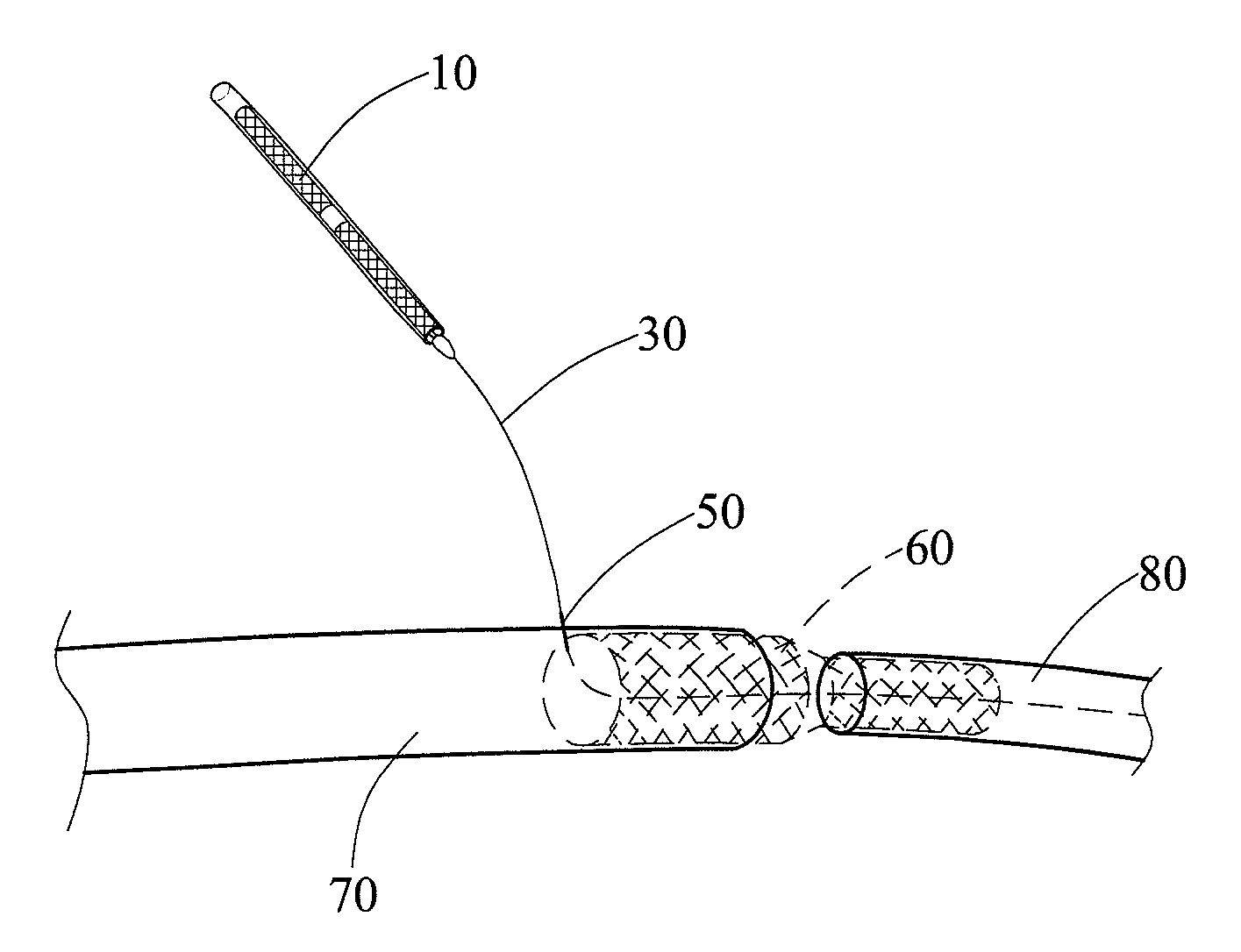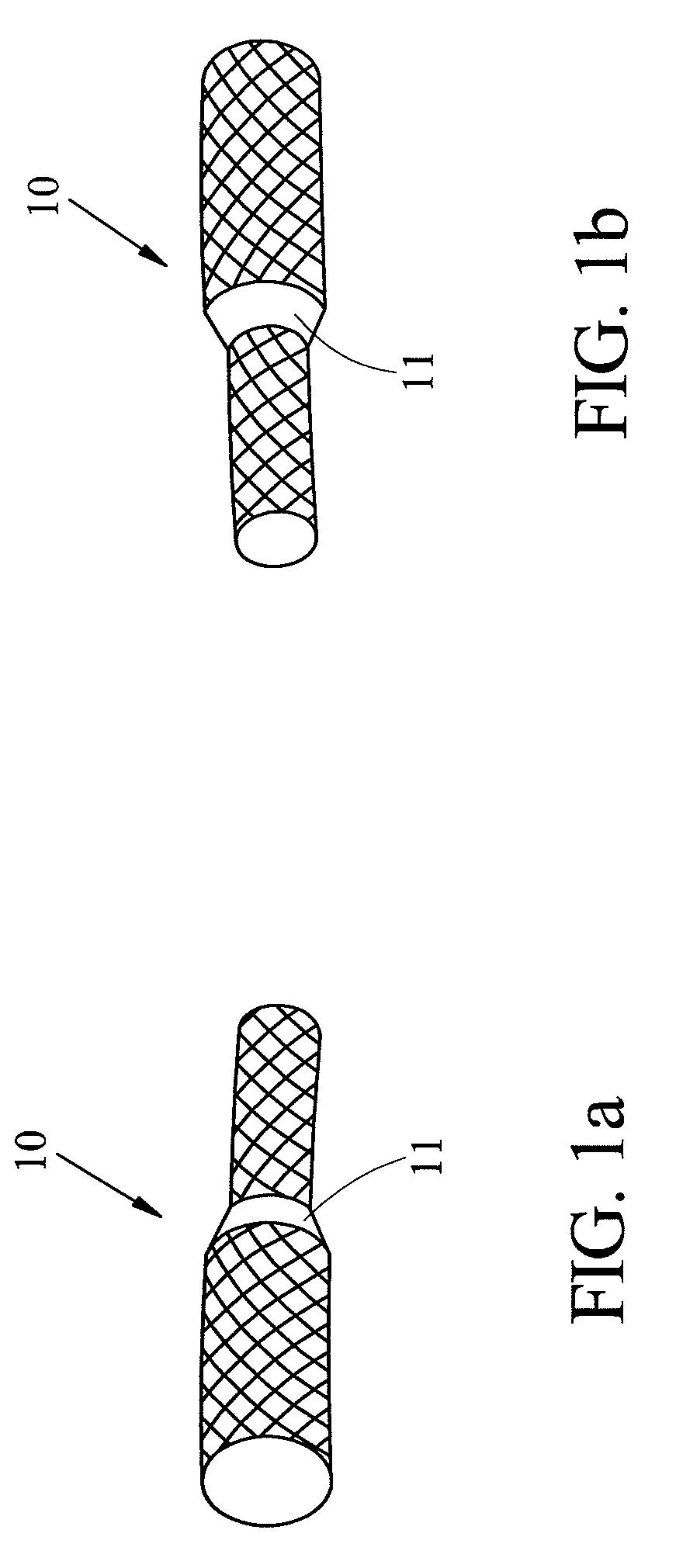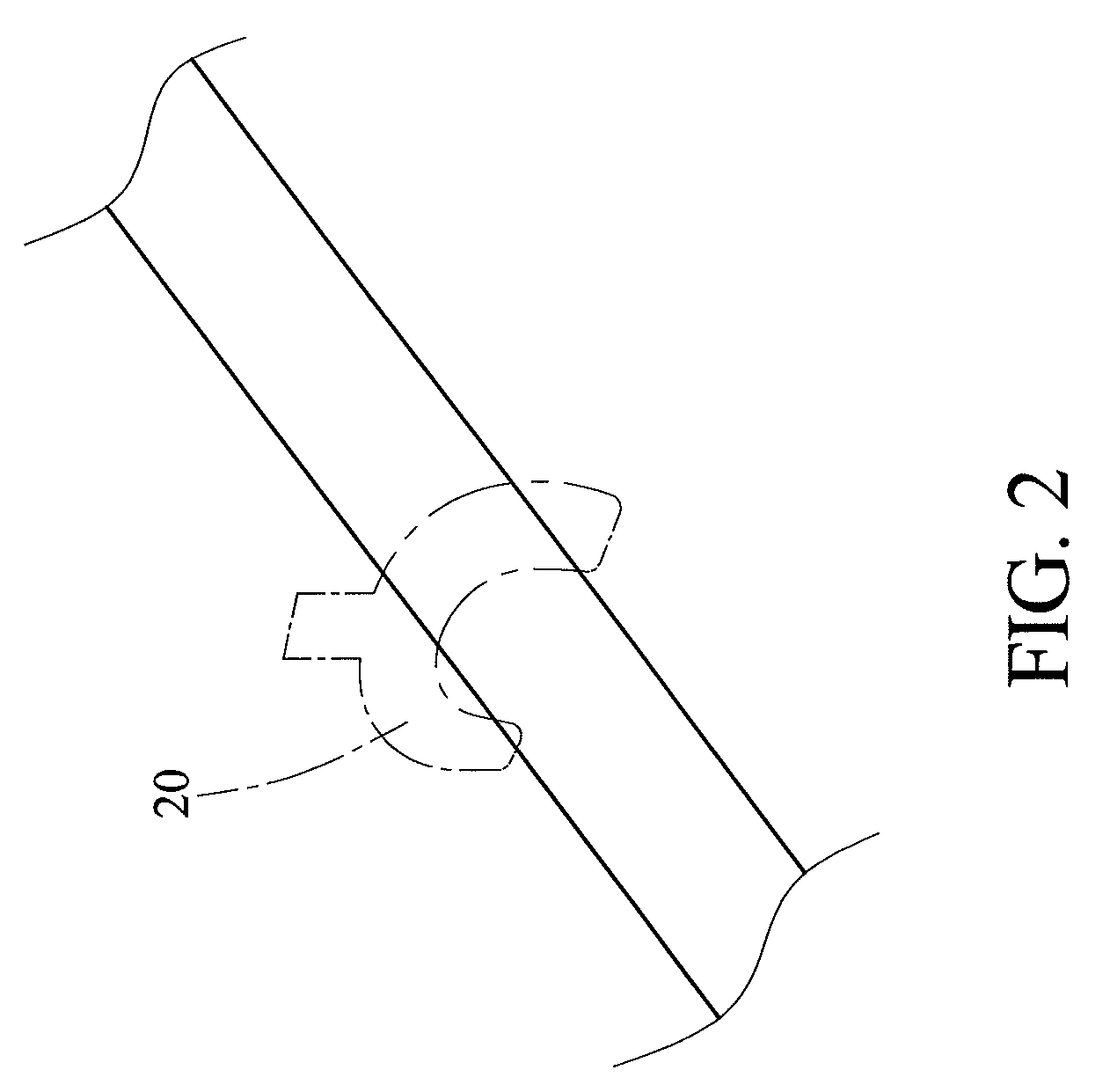Endovascular stent insertion method
a stent and endovascular technology, applied in the field of endovascular stents, can solve the problems of anastomosis stricture, anastomosis stricture, and the experience surgeon cannot avoid a hundred, and achieve the effect of expanding the lumen and accurate sizing
- Summary
- Abstract
- Description
- Claims
- Application Information
AI Technical Summary
Benefits of technology
Problems solved by technology
Method used
Image
Examples
Embodiment Construction
[0028]Referring to FIGS. 1a and 1b, an endovascular stent 10 according to the invention is shown. The endovascular stent 10 is self-expandable. A medical employee may pull a sheath and the endovascular stent 10 may slide to separate from the sheath subsequently. The separated endovascular stent 10 may expand immediately to have both ends securely fastened at one end of a first blood vessel and a facing end of a second blood vessel respectively. As a result, the two blood vessels are connected together.
[0029]Referring to FIGS. 1a, 1b, 2 and 3, an endovascular stent insertion method with respect to end-to-end anastomosis in accordance with the invention is illustrated. The method comprises the following steps:
[0030]A1) locating two blood vessels to be anastomosed (i.e., connected together as target vessels);
[0031]B1) performing a blood control of a first blood vessel 70 and a blood control of a second blood vessel 80 respectively;
[0032]C1) Inserting a guide needle into each of the fir...
PUM
 Login to View More
Login to View More Abstract
Description
Claims
Application Information
 Login to View More
Login to View More - R&D
- Intellectual Property
- Life Sciences
- Materials
- Tech Scout
- Unparalleled Data Quality
- Higher Quality Content
- 60% Fewer Hallucinations
Browse by: Latest US Patents, China's latest patents, Technical Efficacy Thesaurus, Application Domain, Technology Topic, Popular Technical Reports.
© 2025 PatSnap. All rights reserved.Legal|Privacy policy|Modern Slavery Act Transparency Statement|Sitemap|About US| Contact US: help@patsnap.com



